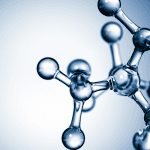Hyaluronic acid knee injections are often discussed using the nickname rooster comb injections. In clinic settings, the key questions are practical. What is being injected, how might it work in osteoarthritis (OA), and what should your team document before and after the procedure?
This guide stays high level. It focuses on mechanism, safety signals, patient counseling touchpoints, and operational considerations. It also flags common misconceptions, including confusion with oral supplements and with dermatology products that use the same base molecule.
Key Takeaways
- Define the therapy: Intra-articular hyaluronic acid for symptomatic knee OA.
- Know the source story: Some products are avian-derived; others are fermentation-derived.
- Set expectations: Local post-injection reactions are common; serious events are uncommon.
- Compare thoughtfully: Gel injections and corticosteroids differ in goals and tradeoffs.
- Run a tight workflow: Verify product, document indications, and record lot details.
Rooster Comb Injections: What They Are and What They’re Made Of
These injections are a form of viscosupplementation (adding a lubricant-like substance to a joint). Clinically, they refer to intra-articular hyaluronic acid, sometimes called hyaluronan. Hyaluronan is a naturally occurring component of synovial fluid. Synovial fluid helps reduce friction and supports load distribution during movement.
The “rooster comb” term comes from a historical source. Early hyaluronan extraction often used avian tissue, including rooster combs. Today, some hyaluronic acid products may still be avian-derived, while others are produced through bacterial fermentation. For clinic intake and consent workflows, this distinction matters mainly for allergy history and for accurate product identification. If your staff need a refresher on terminology and common misconceptions, the internal overview Rooster-Comb Injection Guide is a useful cross-reference.
MedWholesaleSupplies supplies only to licensed healthcare professionals and clinic accounts.
Why it matters: “Rooster comb” is a nickname, not a formulation standard.
How Hyaluronic Acid Knee Injections Work in OA
At a basic level, viscosupplementation knee therapy aims to supplement joint fluid properties. In knee OA, synovial fluid can become less effective at lubrication and shock absorption. By introducing hyaluronic acid into the joint space, the treatment may improve the mechanical environment for a period of time. The phrase rooster comb injections is used in practice to describe this same approach, even when the product is not avian-derived.
Viscosupplementation in plain terms
Clinicians often explain this as “adding gel to a dry hinge.” That analogy is imperfect, but it can help patients understand why the effect is not immediate like an anesthetic. Hyaluronan may influence viscosity and elasticity of synovial fluid. It may also have local biological effects, such as modulating inflammatory mediators in the joint. The magnitude and duration of benefit can vary, and it is often discussed alongside activity modification, weight management, and physical therapy rather than as a stand-alone solution.
For teams comparing products and approaches, it helps to keep the therapy class in view. Several “types of gel injections for knees” exist, and they can differ by cross-linking, molecular weight ranges, and manufacturing source. For a structured overview, see Types Of Gel Injections. For additional context on hyaluronan as a molecule across indications, Hyalgan And Hyaluronic Acid provides useful background.
Why response varies across patients
Response variability is one reason clinics should document baseline function and symptoms before treatment. OA is not uniform. Pain can be driven by synovitis, bone marrow lesions, mechanical alignment, or referred sources. Imaging findings do not always correlate with pain. Comorbidities also matter, including prior surgery, inflammatory arthritis, and bleeding risk from anticoagulants. These factors can affect perceived benefit, tolerance of the injection visit, and follow-up needs.
MedWholesaleSupplies sources brand-name medical products through vetted distribution channels.
Safety, Side Effects, and What to Expect After Injection Visits
Most adverse effects are localized and self-limited, but your team should be prepared to triage concerns. When patients ask “what are the side effects of hyaluronic acid injections,” they often mean immediate injection-site effects. These can include pain at the injection site, warmth, swelling, stiffness, or a transient effusion. Clinics also hear the complaint “knee pain worse after gel injection,” which may reflect a short-term inflammatory flare or mechanical irritation from the procedure itself.
In counseling, it can help to separate expected short-term reactions from red flags. Infection is uncommon but serious. So is a severe acute inflammatory reaction sometimes described as “pseudoseptic” (sterile inflammatory response that can mimic infection). Your escalation pathways should be clear, especially when patients report fever, rapidly increasing swelling, severe pain, or inability to bear weight. Document the counseling provided, the patient’s understanding, and the plan for after-hours contact when relevant. When you use the term rooster comb injections during counseling, pair it with “hyaluronic acid joint injection” to reduce misunderstanding.
Common transient reactions and practical counseling points
Patients frequently ask, “do knee gel injections hurt?” The honest answer is that discomfort varies. Pain can come from the needle puncture, capsular distension, or anxiety. Using consistent local anesthetic practices (per your protocols), employing ultrasound guidance when appropriate, and setting expectations can reduce distress. Documentation should include the approach used (landmark or image-guided), laterality, aseptic technique, and any immediate reaction observed in-clinic.
For a broader comparison of injection approaches used in orthopedics, see Orthopedic Injections Overview.
Pitfalls clinics see most often
- Terminology drift: Patients confuse injections with a rooster comb supplement.
- Underdocumented baseline: No clear pre-treatment pain and function notes.
- Unclear escalation: After-hours plan missing for severe swelling reports.
- Product ambiguity: Brand and lot details not recorded in the chart.
Gel Injection Options vs Corticosteroids: How to Compare
Clinics are often asked to contrast gel injection for knee vs cortisone. These therapies serve different clinical goals and have different risk profiles. Corticosteroid injections are commonly used for short-term symptom control related to inflammation. Hyaluronic acid injections are positioned as a mechanical and biologic adjunct for OA symptoms in selected patients. In these discussions, the label “cortisone shots vs rooster comb” can oversimplify what is really a patient-specific decision.
Operationally, the comparison should include expected onset patterns, follow-up cadence, and payer rules. It should also include local adverse effects, such as post-injection flare, and systemic considerations for steroids. If your clinicians use branded products as examples, keep the conversation neutral and label-based. Internal reading that compares common viscosupplements includes Synvisc-One Vs Durolane and Monovisc Knee Injection.
| Decision factor | Hyaluronic acid (gel) injections | Corticosteroid injections |
|---|---|---|
| Primary aim | Supplement synovial fluid properties in OA | Reduce inflammatory pain and synovitis |
| Patient questions you’ll hear | “How do gel shots work?” “How long will it last?” | “How fast will it kick in?” “How often can I get it?” |
| Common local reactions | Injection-site pain, swelling, transient effusion | Post-injection flare, local soreness |
| Documentation emphasis | Product identification, OA indication, prior therapies | Indication, comorbidities, monitoring considerations |
When clinics discuss rooster comb injections vs synvisc, it helps to clarify that “Synvisc” is a brand example within the viscosupplement class. If your procurement team needs the exact branded item referenced by clinicians, the product listing Synvisc-One Prefilled Syringe can support internal matching, while the official labeling remains the final authority for use details.
Clinic Workflow and Documentation Checklist
Viscosupplementation is a common procedure, but small process gaps create outsized friction. Missing lot numbers complicate adverse event reporting. Loose intake questions can miss avian protein sensitivity in products derived from bird tissue. Inconsistent charting can also undermine coverage decisions and audits. Many teams also benefit from having a single “product identity” template, since patients may refer to the therapy by nicknames like rooster comb injections rather than by the actual hyaluronan product name.
MedWholesaleSupplies focuses on authentic, brand-name supplies for professional clinical use.
Clinic workflow snapshot (high level)
Many clinics run a standard flow: verify patient eligibility and indication → document baseline pain/function and prior conservative care → select product per clinician preference and payer policy → receive and inspect packaging integrity → store per labeling requirements → administer with aseptic technique (image-guided if used) → record product name, lot, expiration, and site/laterality → document immediate tolerance and post-visit instructions → reconcile inventory. Policies differ by site, but a consistent structure reduces missed steps and supports staff cross-coverage.
Quick tip: Keep the product IFU and payer policy summary in one shared folder.
- Eligibility notes: OA diagnosis and symptomatic impact documented.
- Prior care record: PT, NSAIDs, weight management, bracing, as applicable.
- Procedure details: Laterality, approach, guidance method, asepsis.
- Product traceability: Name, lot, expiration, and storage notes.
- Post-visit plan: Expected reactions and escalation instructions documented.
If your organization uses shared procurement across service lines, browsing the Hyaluronic Acid Category can help standardize receiving and traceability conventions. Some clinics also manage adjacent hyaluronan inventory for aesthetics; the broader Dermal Fillers Category may be handled by separate staff and storage areas, so clarify handoffs. Where relevant, align receiving practices across teams, especially for lot capture and expiration checks. If you operate with US distribution partners, confirm documentation requirements before replenishment.
Coverage and Coding Considerations (Including Medicare)
Coverage for hyaluronic acid knee injections varies by payer and by local policy. When staff ask “does Medicare pay for rooster comb injections,” the accurate answer is that payment depends on indications, documentation, and local coverage determinations. Medicare Advantage plans can also apply their own utilization management. Avoid relying on informal rules of thumb. Instead, document clearly and check current policy sources during scheduling.
From an operations standpoint, the best leverage is clean documentation. Record the diagnosis, affected joint, symptom severity, and functional limitation in consistent terms. Capture prior conservative measures and relevant imaging, if your local policy expects it. For billing, product-specific HCPCS coding and injection procedure coding should be validated by your billing team, since codes and payer edits can change. Prior authorization requirements can also differ among commercial plans, and the requested documents may include clinical notes, imaging reports, and prior treatment history.
For additional product comparisons that can inform payer conversations, see Cingal Injection Overview. If clinicians ask about alternatives within the same class, Euflexxa Vs Synvisc and Orthovisc Vs Synvisc can support internal education without substituting for labeling or payer policy.
Authoritative Sources
- AAOS knee osteoarthritis guideline resources
- CMS Medicare Coverage Database (MCD)
- FDA medical device databases and references
In day-to-day practice, success with viscosupplementation is as much operational as clinical. Use precise terminology, confirm product identity, and document consistently. When patients use nicknames, translate them back to the correct class and brand in the chart.
This content is for informational purposes only and is not a substitute for professional medical advice.






